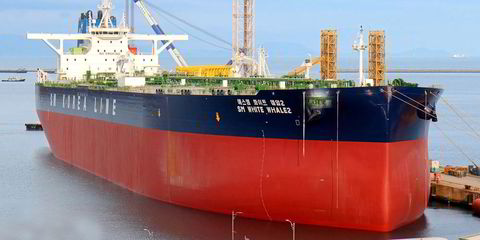Technological innovation is reshaping the shipping and marine industries and, in turn, their insurance and risk mitigation strategies.
For example, blockchain is promising, among other things, supply chain and logistics efficiencies that will affect property insurance coverage, such as hull and machinery, increased value and war risks.
Elsewhere, the increasing availability of data and improvements in its analysis are modernising underwriting, loss prevention and risk finance.
One area ripe for positive technology-driven change is protection and indemnity insurance.
Advisory driven
Traditionally a less transactional and more advisory-driven business, P&I’s broking approach is fast becoming outdated. The emphasis on relationships — while important — may overlook the value that technology’s facts and figures can bring to bear.
While shipping companies demand competitive insurance pricing, they will also benefit from a long-term risk management strategy, informed by solid analytical data.
This is more critical than ever given the industry’s current economic climate, in which shipowners are suffering financially amid signs that years of zero insurance pricing increases may be coming to an end.
Shipowners are after a sustainable competitive rating with as little volatility as possible. Hard data coupled with meaningful advice can deliver the desired result.
Technology is playing an increasingly vital role in marine loss prevention: telematics in charting the movement of a single ship or container, wearable technology in coordinating worker safety, and the Internet of Things, which connects numerous systems to enable them to act in concert.


By sharing data, clubs have the potential to identify loss trends, which in turn can lead to more bespoke and effective loss prevention
Such innovations can bring efficiencies, cost savings and improved safety.
But to gain the greatest benefit from these technologies, P&I clubs must, individually and as members of the International Group of P&I Clubs, do two things.
Embracing change
Firstly, they must fully embrace the technologies. This includes understanding not only the rewards they can bring, but the risks they carry — and how to manage them.
Secondly, they must work together in key areas. At the top of the list is data pooling. The “next level” of loss prevention will become more attainable when the 13 members of the International Group of P&I Clubs openly and actively share their claims data across the group.
In general, more data leads to better analysis. So by sharing data, clubs have the potential to identify loss trends, which in turn can lead to more bespoke and effective loss prevention. Using a unified system should bring value to all members as opposed to organisations drawing conclusions based on much smaller, internal data sources.
As such, industry players can learn from one another, improve health and safety, and reduce claims.

It is hard to see who would not benefit from data sharing, which has the potential to avoid claims related to injuries, loss of life, pollution and more.
Technology-enabled loss prevention and a strong safety culture are two keys to tackling human error — one of the main sources of marine insurance accidents and claims.
Risk financing
Innovation is also enabling efficiencies in risk financing. For example, it is not out of the question to envision in the marine industry the development of parametric insurance cover or the kinds of alternative risk capital arrangements that are increasingly being used elsewhere.
As the industry explores and embraces various technological innovations, it can also expect to benefit from the use of the incoming data stream in “real-time” risk management.
Shipping companies will find they have an up-to-the-minute view of the risk exposures their ships face, meaning they can take mitigation actions faster, while the insurance industry will no longer need to rely only on historical data to price risk.
Technology is having a major impact in the marine industry. Yes, new risks will accompany technology innovation, but the risks of not embracing and adapting are likely far greater.
Richard Adler is head of P&I at Marsh, a New York-headquartered insurance brokerage






